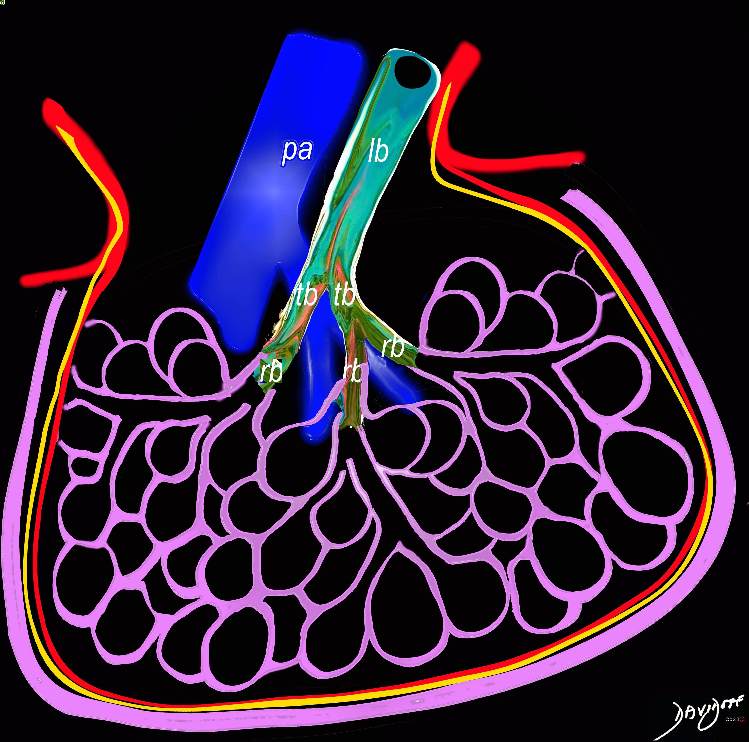
When the end diastolic pressure is between 20 and 30 the intravascular pressure exceeds the intravascular oncotic pressure and fluid starts to leak into the interstitium. The interalveolar septa thicken with fluid (pink) and the interlobular septa also thicken (pink) . The elevation of the end diastolic pressure raises the pressure in the pulmonary veins which is transmitted to the pulmonary artery, and the pulmonary arteriole thus enlarges and becomes larger than its companion airway
The end diastolic pressure is about between 20 and 30 and fluid has started to leak out into the interstitium and results in thickening of the septa
Ashley Davidoff MD TheCommonVein.net lungs-0738 chf01
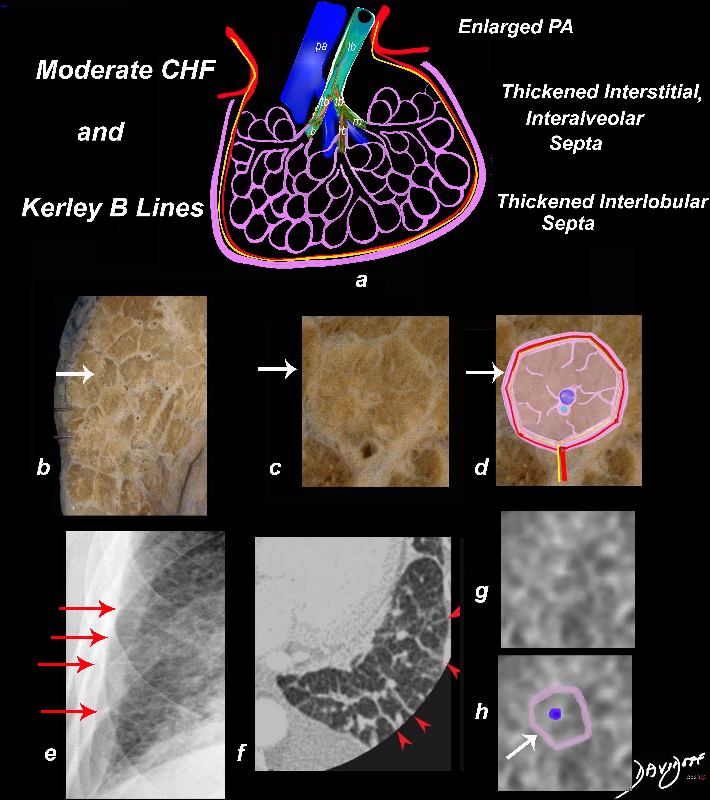
In moderate CHF, when the intravascular pressure is between 30 and 40 mmHg, it exceeds the intravascular oncotic pressure, and fluid starts to leak out of the capillaries into the interstitium. There is distension of the pulmonary arterioles, the lymphatics and thus into the interlobular septa.
The thickening of the interlobular septa (white arrows a,b,c, and d) result in the appearance of Kerley B lines on CXR (red arrows e, and red arrowheads f) . The overall increase in density caused by the fluid accumulations in the inter, and intralobular septa may result in ground glass opacity seen on the CT in images g and h.
Ashley Davidoff MD TheCommonVein.net lungs-0738 chf01b
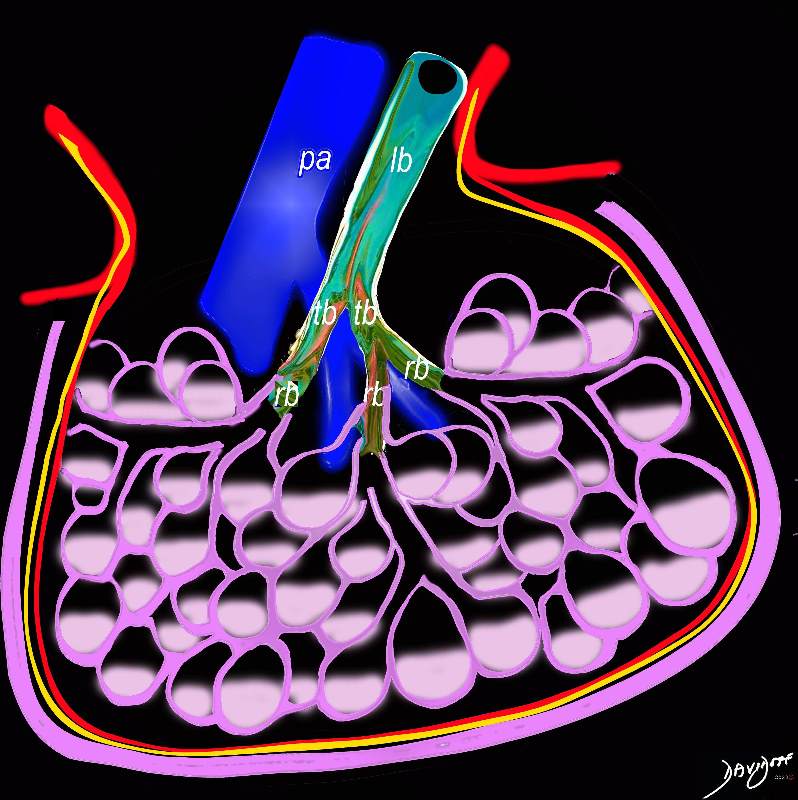
When the end diastolic pressure is between 30 and 40 the intravascular pressure exceeds the intravascular oncotic pressure and fluid continues to leak into the interstitium but now also starts to fill the alveoli. The interalveolar septa and interlobular septa remain thickened with fluid (pink) and the pulmonary arteriole remains enlarged.
Ashley Davidoff MD TheCommonVein.net lungs-0738 chf02
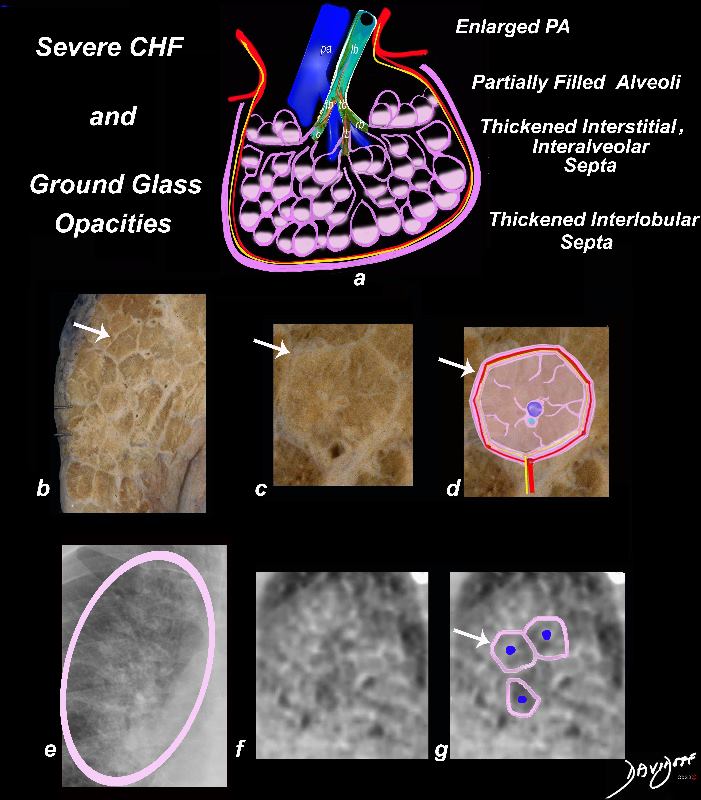
In severe heart failure the end diastolic pressure is between 30 and 40mmHg and fluid continues to leak into the interstitium but now also starts to fill the alveoli. The interalveolar septa and interlobular septa remain thickened (white arrows, b,c,d, and e) and the fluid in the alveoli result in the appearance of ground glass on CXR (circled in pink in e, and noted in the appearance on CT (f,g)) . The pulmonary arteriole remains enlarged ( blue sphere a,d,g).
Ashley Davidoff MD TheCommonVein.net lungs-0738 chf02b
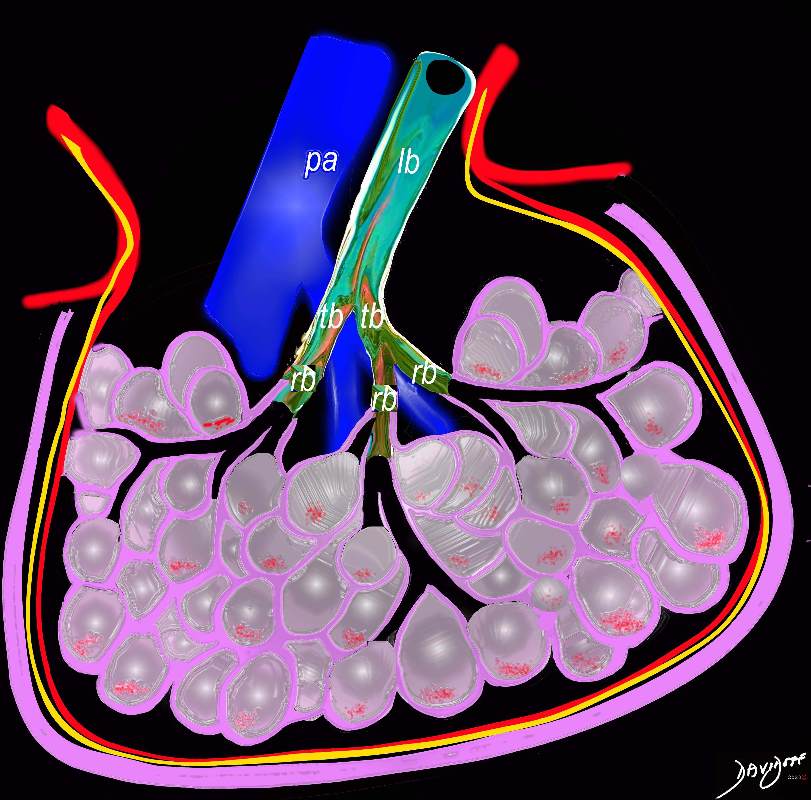
When the end diastolic pressure is between 30 and 40 the intravascular pressure exceeds the intravascular oncotic pressure and fluid continues to leak into the interstitium but now also starts to completely fill the alveoli. Red cells may also leak into the alveoli caused by capillary rupture. The interalveolar septa and interlobular septa remain thickened with fluid (a, and white arrows in b, c, and d). The filling of the alveoli, results in a consolidation seen on the CT, (orange arrow g) and a net “white density” of the parenchyma which results in air bronchograms against the air filled “black airways” (a, and CXR – red arrows in e and f). The pulmonary arteriole remains enlarged (blue vessel in a and sphere in d).
Ashley Davidoff MD TheCommonVein.net
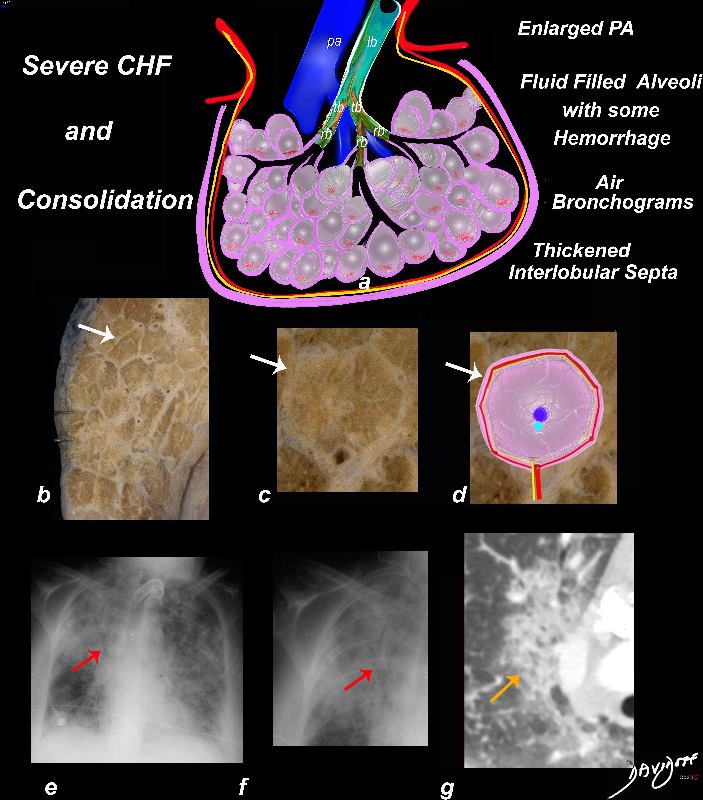
When the end diastolic pressure is between 30 and 40 the intravascular pressure exceeds the intravascular oncotic pressure and fluid continues to leak into the interstitium but now also starts to completely fill the alveoli. Red cells may also leak into the alveoli caused by capillary rupture. The interalveolar septa and interlobular septa remain thickened with fluid (a, and white arrows in b, c, and d). The filling of the alveoli, results in a consolidation seen on the CT, (orange arrow g) and a net “white density” of the parenchyma which results in air bronchograms against the air filled “black airways” (a, and CXR – red arrows in e and f). The pulmonary arteriole remains enlarged (blue vessel in a and sphere in d).
Ashley Davidoff MD TheCommonVein.net lungs-0738 chf04b
